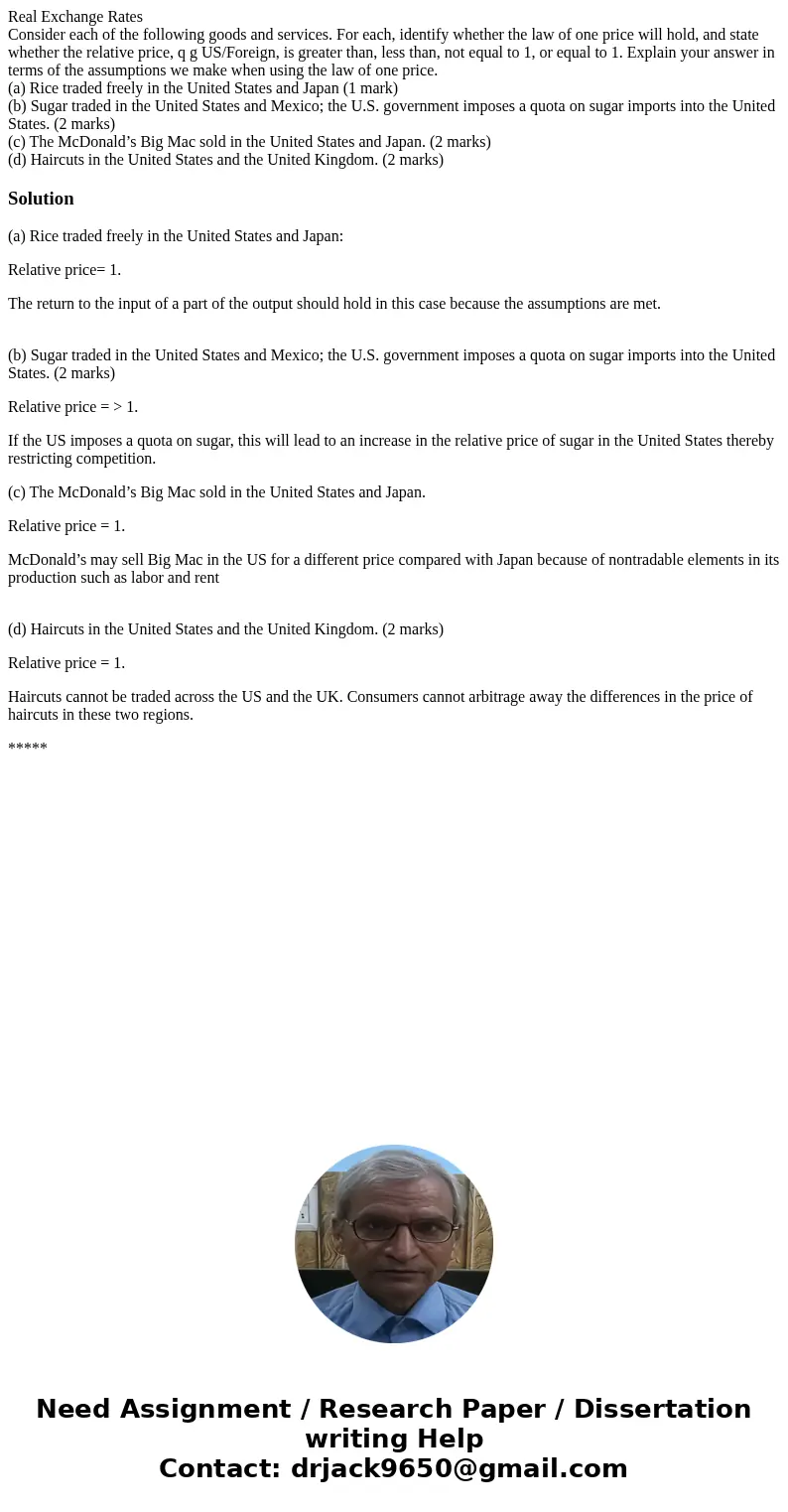Real Exchange Rates Consider each of the following goods and
Real Exchange Rates
Consider each of the following goods and services. For each, identify whether the law of one price will hold, and state whether the relative price, q g US/Foreign, is greater than, less than, not equal to 1, or equal to 1. Explain your answer in terms of the assumptions we make when using the law of one price.
(a) Rice traded freely in the United States and Japan (1 mark)
(b) Sugar traded in the United States and Mexico; the U.S. government imposes a quota on sugar imports into the United States. (2 marks)
(c) The McDonald’s Big Mac sold in the United States and Japan. (2 marks)
(d) Haircuts in the United States and the United Kingdom. (2 marks)
Solution
(a) Rice traded freely in the United States and Japan:
Relative price= 1.
The return to the input of a part of the output should hold in this case because the assumptions are met.
(b) Sugar traded in the United States and Mexico; the U.S. government imposes a quota on sugar imports into the United States. (2 marks)
Relative price = > 1.
If the US imposes a quota on sugar, this will lead to an increase in the relative price of sugar in the United States thereby restricting competition.
(c) The McDonald’s Big Mac sold in the United States and Japan.
Relative price = 1.
McDonald’s may sell Big Mac in the US for a different price compared with Japan because of nontradable elements in its production such as labor and rent
(d) Haircuts in the United States and the United Kingdom. (2 marks)
Relative price = 1.
Haircuts cannot be traded across the US and the UK. Consumers cannot arbitrage away the differences in the price of haircuts in these two regions.
*****

 Homework Sourse
Homework Sourse